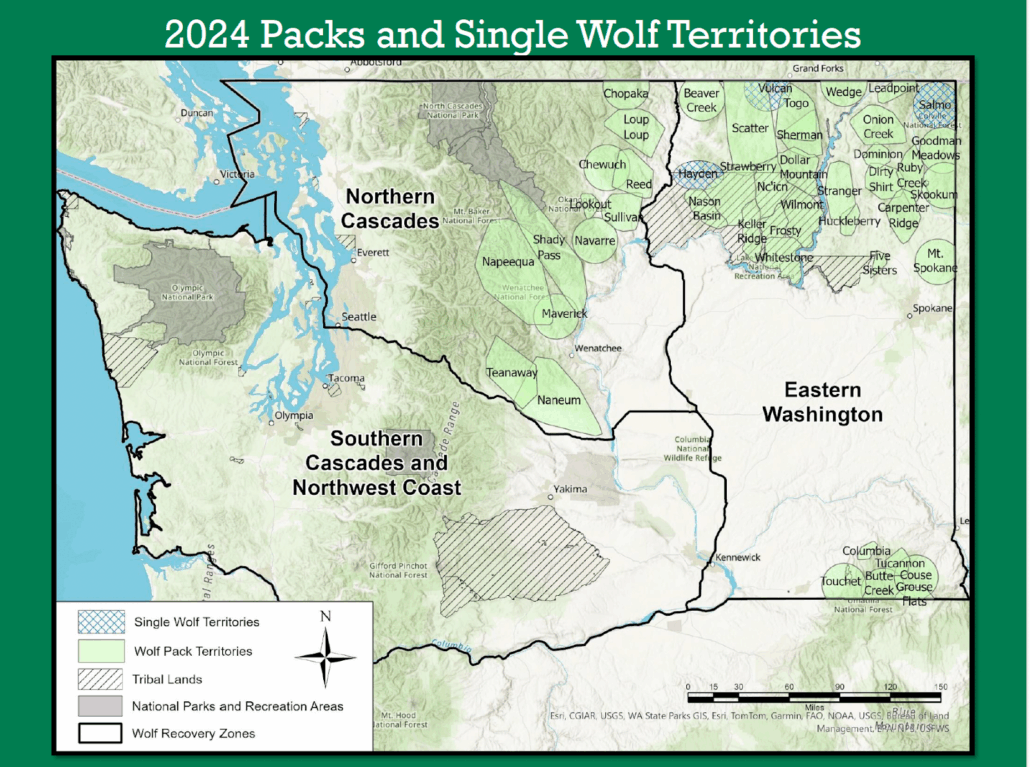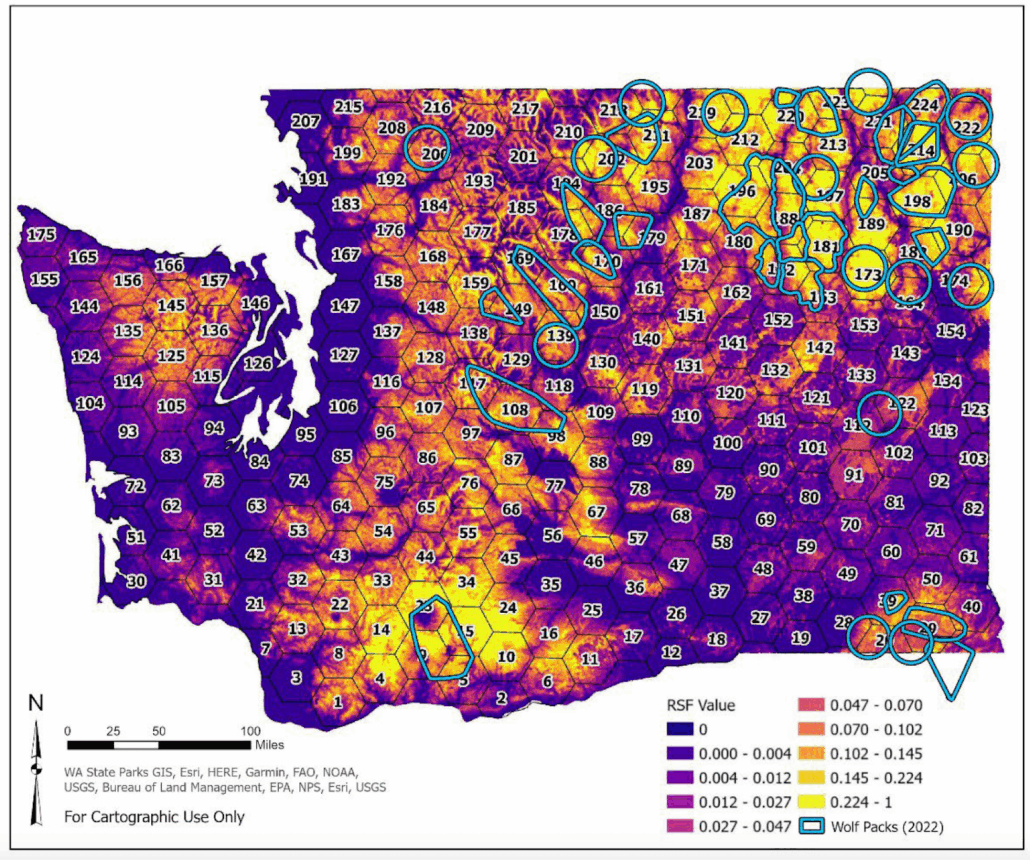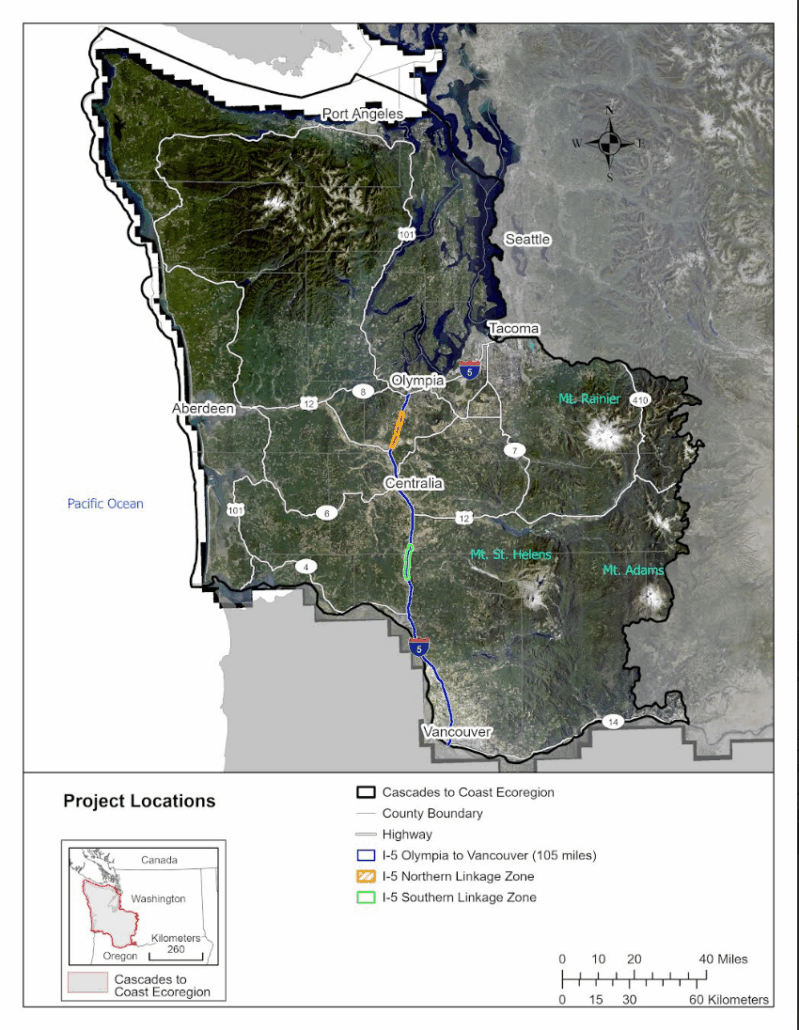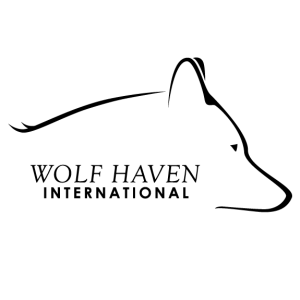Wolf Wise Communities
As the population of wolves in Washington state grows, and as individual wolves disperse, we can expect that wolf packs may soon be established in southwestern Washington (particularly in the south Cascades recovery region, as identified in the state’s Wolf Conservation and Management Plan). In anticipation of the return of wolves to these regions, Wolf Haven and its partners are working to build Wolf Wise Communities (WWC) that can thrive in landscapes with wolves.

Current distribution of wolf packs in Washington (WDFW 2024 Annual Wolf Report)
What is the purpose of the WWC program?
Wolf issues are fundamentally social, often rooted in feelings of marginalization that can strain relationships and contribute to the spread of fear and misinformation. Additionally, wolf conservation and management is frequently viewed from complex perspectives, which can divide communities and prevent a shared vision for coexistence.
The WWC program is uniting community members in southwest Washington to consider the possible natural return of wild wolves to our local landscape. Through conversations, collaboration, and experiential exchange, the program aims to:
- Understand the ways in which people perceive wolf issues
- Identify shared goals
- Exchange reliable information
- Brainstorm solutions
- Cultivate a shared sense of ownership over the entire process and its outcomes
At the heart of the WWC initiative is the belief that partnerships built on trust, respect, credibility, and the ability to empathize with individuals who have different and opposing perspectives will produce thriving and resilient human and wolf communities. Moreover, the program focuses on modeling leadership through a lens of hope, which we believe is crucial in this time of deep polarization.
How does the WWC program differ from the WAG?
The WWC program is guided by the same philosophy and approach as the Wolf Advisory Group (WAG), which is called Conservation Conflict Transformation (CCT). However, there there are several key differences:
- WAG serves as an advisory body to the Washington Department of Fish and Wildlife (WDFW), with members officially appointed by the WDFW Director whereas the WWC program is not an advisory group and it is open to all interested community members
- WAG focuses on communities in eastern Washington, where wolf populations are already well established whereas the WWC program focuses on communities in southwestern Washington that do not yet have a local wolf population but likely will soon
- WWC program is a community conservation initiative led by Wolf Haven, and with a smaller regional focus on the communities and landscapes in southwestern WA, where Wolf Haven has been headquartered since 1982.
To get in touch with us about this project, please contact wildlife@wolfhaven.org

Washington wolf habitat suitability map – the “brighter” colors (yellow, orange, red) indicate the most suitable wolf habitat (healthy ungulate populations), while cooler colors are areas of less suitable wolf habitat (Petracca et al. 2024)

WWC is focused on communities in southwest Washington where the proposed Northern Linkage wildlife crossing, spanning Interstate 5 between Tumwater and Grand Mound, bisects critical wildlife corridors that connect the Cascade Mountains to the Olympic Peninsula. This region will be critical for safe passage as wolves continue to recolonize the South Cascades recovery region.
